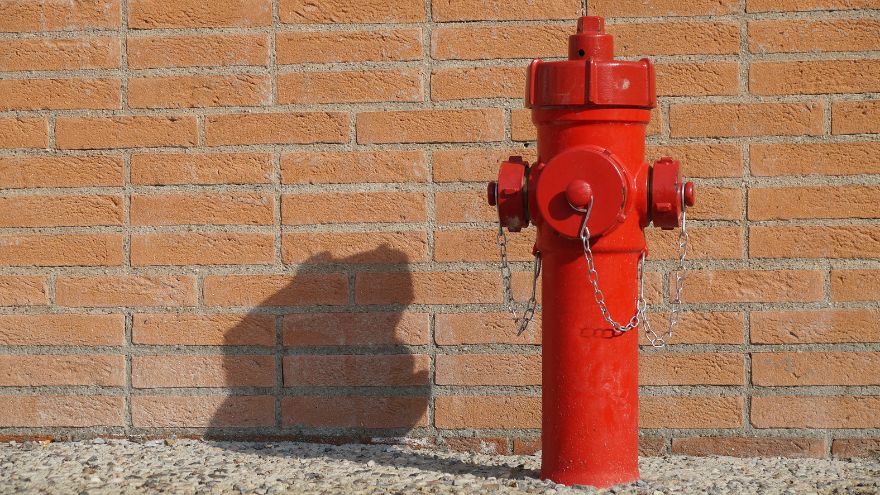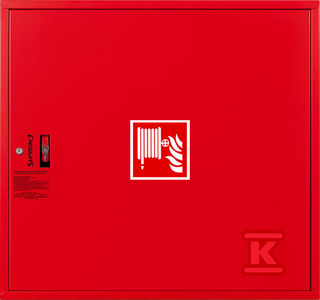Introducing appropriate fire protection measures is not only necessary, but also required by law. Here we mean, for example, hydrants . We distinguish external and internal hydrants. It is worth learning more about them and learning how to run these devices.

Check out the hydrants at the Onninen wholesaler
Types of hydrants
 Internal hydrants should be used in fire zones classified as a human hazard category ZL. You need to know that they should be located on every floor of a tall and high-rise building. The exception is a fire zone belonging to the ZL IV human hazard category. At the same time, an internal hydrant must also be located on each floor of a low-rise and medium-rise building. If the area exceeds 200 m2, as well as in the human hazard zones ZL I, ZL II, ZL III and ZL V, hydrants 25 are used. However, hydrants 33 must be used in the garage if it is large-story or closed and has more than 10 parking spaces. .
Internal hydrants should be used in fire zones classified as a human hazard category ZL. You need to know that they should be located on every floor of a tall and high-rise building. The exception is a fire zone belonging to the ZL IV human hazard category. At the same time, an internal hydrant must also be located on each floor of a low-rise and medium-rise building. If the area exceeds 200 m2, as well as in the human hazard zones ZL I, ZL II, ZL III and ZL V, hydrants 25 are used. However, hydrants 33 must be used in the garage if it is large-story or closed and has more than 10 parking spaces. .
Even larger hydrants, i.e. 52 hydrants, should be used in zones  production and warehouses, in places where fire loads do not exceed 500 MJ/m2. Hydrants must also be located in places where the fire load density does not exceed 1000 MJ/m2. The hydrant must also be placed outside the building. It should then be part of the water supply network. It will be a source of water for firefighting purposes. In this case, the Ministry of the Interior and Administration, in the regulation of July 24, 2009, also established the conditions when an external hydrant must be installed. Applies to:
production and warehouses, in places where fire loads do not exceed 500 MJ/m2. Hydrants must also be located in places where the fire load density does not exceed 1000 MJ/m2. The hydrant must also be placed outside the building. It should then be part of the water supply network. It will be a source of water for firefighting purposes. In this case, the Ministry of the Interior and Administration, in the regulation of July 24, 2009, also established the conditions when an external hydrant must be installed. Applies to:
- settlement units with a population exceeding 100 people (but these cannot be colonial buildings or located within the boundaries of a public building);
- public buildings and collective residences, as well as construction and storage facilities with a volume exceeding 2,500 m3 or an area exceeding 500 m2;
- building structures with a fire zone with an area of more than 1,000 m2 or intended for more than 50 people at the same time;
- agricultural buildings with a fire zone area exceeding 1,000 m2.
How to start an internal hydrant?
An internal fire hydrant is an extremely important fire-fighting device. It should be placed on the internal water supply network. It is used to extinguish group A fires. Importantly, it can be used to extinguish fires from a greater distance than is the case with fire extinguishers. It can also be used to extinguish fires. Turning on an indoor hydrant is really simple. It would be enough to:
- open the cabinet or, if necessary, break it;
- unroll the hose with a nozzle at the end;
- open the hydrant valve;
- direct the stream at the visible source of fire.
Remember that indoor hydrants should not be used to extinguish fires within electrical installations or devices, as this may result in electric shock. Hydrants should also not be used to extinguish fires if they occur in the area of consumer electronics.
How to start an outdoor hydrant?
 In order to easily open the hydrant shut-off valve, you need to know that the distance between the hydrant valve pin and the edge of the hydrant cannot be less than 0.8 m in any case. Activating an external hydrant is not difficult. It is worth knowing that it contains a mechanical sensor that monitors the opening and water consumption. It is located at the base on the right side. There is also a volumetric sensor that also monitors the opening and water intake, but on the left side. A hose is connected to the hydrant, which allows for quick and easy access to the water, but it must be remembered that an external hydrant can only be used by authorized water supply employees, as well as fire brigade units or volunteer fire brigades during fire extinguishing operations.
In order to easily open the hydrant shut-off valve, you need to know that the distance between the hydrant valve pin and the edge of the hydrant cannot be less than 0.8 m in any case. Activating an external hydrant is not difficult. It is worth knowing that it contains a mechanical sensor that monitors the opening and water consumption. It is located at the base on the right side. There is also a volumetric sensor that also monitors the opening and water intake, but on the left side. A hose is connected to the hydrant, which allows for quick and easy access to the water, but it must be remembered that an external hydrant can only be used by authorized water supply employees, as well as fire brigade units or volunteer fire brigades during fire extinguishing operations.
The safe use of hydrants requires their inspection. This should be done at least once a year. When it comes to technical inspections and maintenance activities of devices located on the premises of the workplace or in public places, these fire protection devices are also subject to technical inspections at least once a year. The manufacturer's recommendations should be followed here. Inspection of hydrants must be performed by an authorized person. It is the owner of the water supply and fire protection networks.